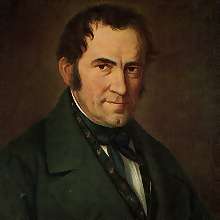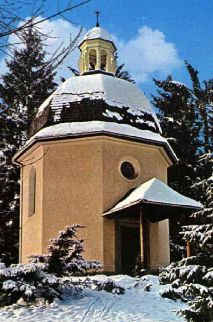| |
 
THE STORY OF
SILENT NIGHT
 |
|
It was the
afternoon of a cold Christmas Eve in
1818, and Joseph Framz Mohr trudged
through the snow from his home in
Oberndorf bei Salzburg in the Austrian
Tyrol to visit his friend Franz Xavier
Grüber, a schoolmaster in the
neighbouring town of Amsdorf bei Laufen.
Mohr was the pastor of the village church
and Crüger the organist. He desperately
needed a new carol for Midnight Mass and
the organ was out of action due to recent
floods. He took with him the words of a
poem he had written two years earlier,
describing the night when angels
announced the birth of the long awaited
Messiah to the shepherds on a hillside.
later that day, the little congregation
at Obendorf saw the two men standing in
front of the altar in St. Nicholas’
Church singing “Stille Nacht!
Heilege Nacht!” fir the first time,
accompanied simply by a guitar, and
backed by the choir, who simply repeated
the last two lines of each verse. |
Some time later - it is not
known exactly when, Karl Maurecher, an organ
builder who lived in the Ziller valley, arrived
at the church to repair the organ and obtained a
copy of the words and music of the carol, which
he passed on to two travelling families of folk
singers, the Strassers and the Rainers
These two families were something like the Trapp
family, who were featured in The Sound of Music,
and one of the Rainers’ performances was
heard by The Emperor Franz Joseph and Tsar
Alexander, and the carol soon became a favourite
of King Frederick William IV or Prussia, and was
sung every year at the Cathedral in Berlin. In
1833 it was published in Dresden and Leipzig as
one of “Four Tyrolean Songs.”
In 1839 the Rainers took the tune to America,
where it was heard for the first time at the
Alexander Hamilton Monument outside Trinity
Church in New York City, and shortly afterwards
the first of many English translations appeared.
The definitive English version was the work of
Rev John Freeman Young, who in 1859 issued a
16-page pamphlet called carols for Christmas
Tide, beginning “Silent Night, Holy Night,
all is calm, all is bright.” He later became
Bishop of Florida.
Meanwhile, in
1854, at the request of the Royal Court
Chapel in Berlin and the monastery of St.
Peter at Salzburg, an investigation was
launched into the apparently unknown
origins of the carol. Mohr had died
penniless in 1848, but Grüber, a
relatively unknown provincial organist,
wrote claiming that it was his, though
many could not believe that such a melody
was not the work of Mozart, Beethoven or
Schubert.
Proof finally appeared in 1995, when a
early copy in Mohr’s own hand was
authenticated, inscribed “Melodie
von Fr. Xav. Grüber” This is
probably the closest to the original that
we have, and has been used for
reconstructing authentic editions in
recent years.
At the beginning of the last century the
town of Oberndorf was relocated due to
the constant flooding of the Salzach
river. The original church of St Nicholas
closed in 1903 and was demolished, a new
one opening the following year. A tiny
memorial Chapel was built on the site of
the site of the original chapel and
dedicated in 1937, a monument to the
miracle of Silent Night, which, in 300
different languages, has entered the
hearts of people everywhere. |
|
 |
Tom Muckley, December 2007
This article was originally
published by the
Petersfield Post
tommuckley.co.uk
|
|



